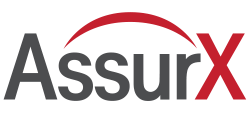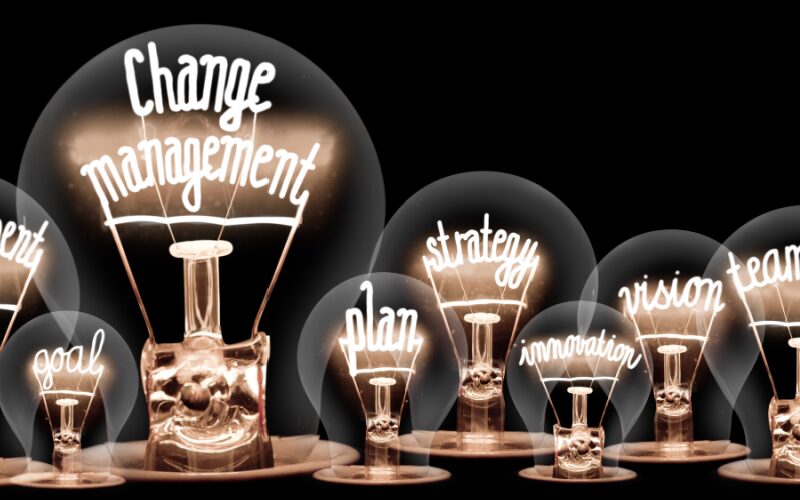May 29, 2024
Look through even a few FDA warning letters, and you’re likely to find violations related to change management.
One recent warning letter, for instance, cited a pharmaceutical manager for changing drug components without justification. Another noted a lack of change management as a major factor in unexpected product variation, after the company released sub-standard product under a deviation instead of using change control.
The good news for manufacturers: change doesn’t have to be so risky.
With the right change management tools, companies can execute change effectively and efficiently, with full visibility into the risks and benefits of proposed changes.
To see how, this article explores:
- The basics of the change management process
- Why change management is essential
- How change management tools in the QMS can streamline the process while mitigating risk
Download a free case study on how one pharmaceutical manufacturer implemented change control as part of an automated QMS
What Is Change Management?
Change management refers to the framework used to plan and execute changes with minimal risk and disruption. The purpose of change management tools is to facilitate smooth transitions so that employees, teams, and systems are prepared for new ways of working.
To do it, organizations must address key aspects of change such as:
- Planning and risk assessment
- Stakeholder buy-in and communication
- Employee training and knowledge transfer
Change Management and Change Control: Understanding the Difference
Change management and change control are two related but distinct concepts. Change management refers to the overall process an organization uses to plan and implement changes, including:
- Identifying the need for change
- Assessing the impact and risk or proposed changes to the process
- Getting stakeholder input and buy-in
- Communicating change with your team
Change control is a specific process within change management, with more granular focus on managing changes to equipment, processes, and documentation. Change control involves the same steps of documentation, evaluation, and bringing in stakeholders to track and approve changes so they are implemented correctly.
The Change Management Process
While each organization is different, the change management process typically includes the following steps:
- Change request: Explain the change type (e.g., document, equipment, process) and describe the current situation, recommended change, and justification.
- Risk assessment or impact analysis: This step describes the impact as well as explores the potential risks associated with the change.
- Stakeholder review: At this point, you need to involve stakeholders in reviewing the risk assessment to determine whether the benefits of change outweigh the risks.
- Change order: Here you develop proposed tasks for implementing the change, such as training, validation, or document changes. One you have the proposed change plan outlined, stakeholders again review to provide comments before approval.
- Change execution: At each step in the plan, you’ll need to involve stakeholders in the necessary approvals and signatures, as well as attach any photos or supporting documentation.
Why Change Management Is Essential in Manufacturing
Change management tools are critical in many manufacturing situations, including any time you:
- Introduce new equipment or technology: Having a structured change management process ensures your people are adequately trained and understand how their roles might change. Change management also helps connect the dots so that people understand why things are changing, helping them embrace the benefits of new technology rather than resisting it.
- Expand production facilities or add new process steps: Whether you’re introducing a new line or updating your process, it’s critical to evaluate potential impacts and their risk. This way, you’re not blindly introducing change that could create problems down the line.
- Introduce Quality Management System (QMS) software: If you’re moving from paper-based quality management to an automated QMS, change management is an important part of the conversation. This helps you anticipate challenges and streamline implementation and user adoption.
The Risks of Inadequate Change Management
All of the situations listed above create significant risk for companies without a robust change management process. Below, we present three scenarios highlighting the potential consequences of poor change management.
Scenario 1: Adding New Plant Floor Equipment or Technology
A manufacturing plant decides to introduce robotic equipment to perform assembly tasks. Because of schedule and budget constraints, however, the change is executed without thorough testing and training. As a result:
- Employees don’t know how to operate the new machines, leading to an increase in safety incidents.
- The new equipment doesn’t integrate well with existing systems, resulting in production delays, defects, and equipment downtime.
- Lack of documentation and communication leaves maintenance struggling to troubleshoot issues, which only ends up prolonging downtime and hurting productivity overall.
Scenario 2: Adding a New Production Line
A food manufacturer seeing growing demand for its products decides to add a new production line. During a rushed implementation, key stakeholders aren’t involved in the decision-making process. This results in:
- Quality issues and complaints due to the new line not being aligned with product specifications and quality standards
- Operators struggling with new processes and workflows, creating bottlenecks and reduced yield
- Delays in shipments of both raw materials and finished products, leading to supply chain disruptions
- Low employee engagement, declining morale, and an increased turnover rate
Scenario 3: Changing a Process Step
In an effort to improve efficiency and reduce cycle times, an automotive plant changes a key process step in its assembly line. However, the team implements the change without conducting a risk assessment or soliciting input from operators.
The result is:
- Increased defects and safety incidents due to the new step introducing risks that weren’t identified ahead of time
- Operators become confused and frustrated, leading to resistance and even some workers reverting to the old process
- Inadequate knowledge transfer which causes new hires to struggle to follow the new procedure
- Lack of traceability into potential root causes of quality problems that ultimately arise from the new process
Change Management and Business Continuity
Change management plays an essential role in business continuity, and not just from the perspective of streamlining change in the short term.
Imagine, for instance, a manager makes an important change, leaving the organization not long after. Years later, a new manager trying to put the pieces together needs to know why the team made the change and which risks they evaluated in the process.
Without the right change management tools, the new manager has to rely on word of mouth, email records, or notes left behind by the previous manager. This isn’t just important internally, but also when an auditor asks about why you made a certain change.
Change Management: The Regulatory Perspective
Change management requirements feature heavily in a number of regulations across a range of industries worldwide, as summarized in the table below.
Change control is also a core element of many ISO standards, including ISO 9001, ISO 13485, ISO 22000, and more. The reason: managing change is fundamental to ensuring the consistency and reliability of products and processes—and reducing risks for customers, employees, and businesses.
| Industry | Regulations |
|---|---|
| Medical Device |
|
| Pharmaceuticals |
|
| Food & Beverage |
|
| Chemicals |
|
Change Management Tools in the QMS
Change management tools as part of an automated quality management system (QMS) can help you reduce change risks by providing greater visibility and control over the process.
Within the QMS, robust change management tools allow you to:
- Initiate, track, and document any change type from start to finish
- Standardize different types of change processes according to your needs, whether it’s product, process, equipment, or document changes
- Ensure compliance throughout the process with centralized documentation, time-stamped audit trails, and electronic signatures
- Facilitate stakeholder collaboration and efficiency while minimizing manual handoffs, bottlenecks, and delays
Change Management Tools: Essential Features
So, what should companies look for in an automated change management solution? There are several crucial elements to pay attention to:
- Configurability: The solution should come with out-of-box change management workflows built around industry best practices, while also allowing you to create unlimited workflows configured to your needs.
- Risk assessment tools: Look for a platform that allows you to build your own library of questions you can use in risk assessments. This will help you standardize your process so you ask the same questions each time, without having to remember the right wording. The system should also provide standard questions out of the box that you can include in your risk assessment to get you started.
- Integration: You should be able to integrate the QMS with external systems so that change requests can be initiated from anywhere, such as your ERP, PLM, CRM, or LIMS.
Conclusion
While change is a necessary part of continuous improvement, uncontrolled change introduces significant risks to manufacturers, their employees, and the business as a whole.
Change management software can help companies standardize their approach to change, keeping the process on track while preventing unintentional harm. For those companies that can get a handle on change—and do it well—the possibilities are endless.
Download a free brochure on AssurX Change Management
About the Author
Stephanie Ojeda is Director of Product Management for the Life Sciences industry at AssurX. Stephanie brings more than 15 years of leading quality assurance functions in a variety of industries, including pharmaceutical, biotech, medical device, food & beverage, and manufacturing.


